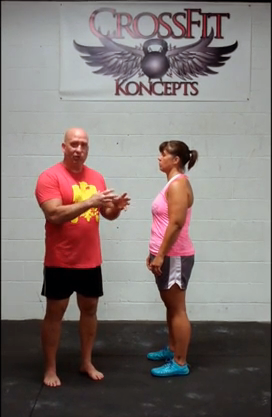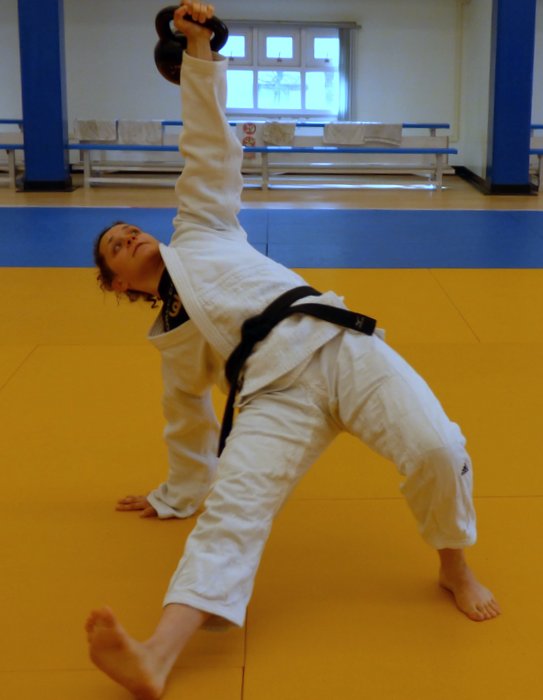
When we think of Bruce Lee throwing a kick, Muhammad Ali dodging a punch, or a great wrestler like Dan Gable swiftly shooting in for a double-leg takedown and dumping his opponent on the mat, we can easily imagine strength exerted on multiple planes. This multi-dimensional strength and stability is achieved through specific strength conditioning. It is the key for optimizing body movement and power for a combat athlete’s knock-out punch. It also provides incomparable groundwork for other athletes, too.
The majority of today’s programs favor traditional strength and conditioning approaches which are often heavily biased towards sagittal plane (forward and backward) movements. We definitely need strength in the sagittal plane, and many of the big-bang-for-the-buck exercises like squats and deadlifts occur in this plane.
But in designing our training, it is important to understand that the human body does not move in just one direction. We can also move side-to-side, forward, backward, and in rotation. Training in multiple planes, or multiple directions, helps us achieve higher levels of body awareness, balance, and coordination. This improved programing allows for quicker reaction times and more efficient neuro-motor function. Training in all the planes can help athletes and clients avoid injury and enhance their performance. It’s a required practice for any athlete determined to consistently perform on an elite level.
The Three Planes:
Sagittal Plane:
Movements in the sagittal plan move forward and back, or through the mid-line of the body. Common examples of sagittal plane movements are a biceps curl or a sit-up.
Frontal Plane:
Movements along the frontal plan can be described as side-to-side, such as abduction and adduction. Exercises that work through the frontal plane are side lunges and jumping jacks.
Transverse Plane:
Movements in the transverse plane include horizontal abduction, adduction or rotational actions. Exercise examples include the Russian twist or a cable woodchop.
One major reason most sports injuries occur in the frontal and transverse planes is that most athletes are only training in the sagittal plane. Athleticism depends on a tremendous amount of movement in different planes of action. Strength and conditioning programs for athletes should strive to include as many variations of movement as possible to train muscles in as many planes as possible (Kenn, 2003).
As trainers and coaches, we must prepare our athletes by strengthening their bodies in all three planes. If your athletes understand the difference between these three planes of movement and can develop their ability to efficiently weave their movements together, then they will be well-rounded and less prone to injury. For example a fighter in the ring or cage spins, moves left and right, dodges kicks, pivots, punches, and is constantly tackled. If his or her body is weak in a particular plane, the likelihood of an injury is much greater.
Most popular training methods do not use multi-planar movements. Powerlifting, Olympic lifting, CrossFit training, and bodybuilding tend to primarily work in the sagittal plane. Very few movements are in the transverse or frontal planes. Additionally, most of these training methods do not include multi-planar movements—combinations of frontal, sagittal, and transverse planes of motion. These popular training methods are still valid for training athletes, but coaches should also consider ways to train sport-specific movements that athletes will perform on the field of play (Brown, 2013).
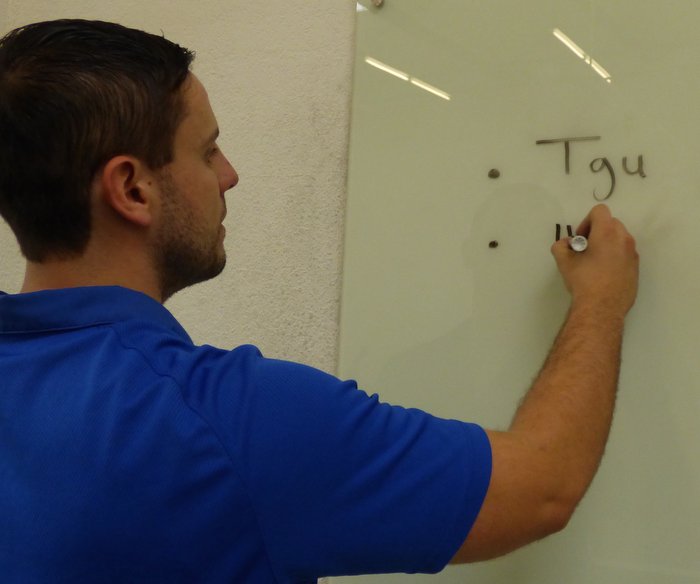
As strength coaches and trainers, we can create workouts that hit all of these planes, or we can select compound exercises—triplaner movements—that hit all three planes in one rep. One of the best triplanar movements of all is already a staple among RKC and HKC Instructors: the get-up
In the kettlebell community and the strength and conditioning world, the get-up is highly regarded, and with very good reason. It’s a highly functional movement and total body exercise. Its benefits include improved shoulder stability and strength, correction of left-right asymmetries, overall mobility, core strength, improved movement skills, overall proprioception / coordination, and time under tension. The get-up also teaches athletes to stabilize themselves and create whole body tension in a variety of positions.
Truly Triplanar
The above-mentioned list of benefits is more than enough justification to include the get-up in our workouts. But, I think that one of the most valuable benefits provided by the get-up is that it passes through all three movement planes from the ground up, and again on the way back down to the ground. For that reason alone, the kettlebell get-up is one of my favorite options—it forces you to work in EVERY plane of motion.
Body Awareness
The get-up provides a variety of functional movement patterns and an unmatched stimulation to our vestibular and nervous systems. Once they have mastered all the steps of the get-up, you can even lead your clients and athletes through the movement with their eyes closed for a greater nervous system challenge. The body awareness developed from practicing get-ups provides tremendous value for athletes and the general population.
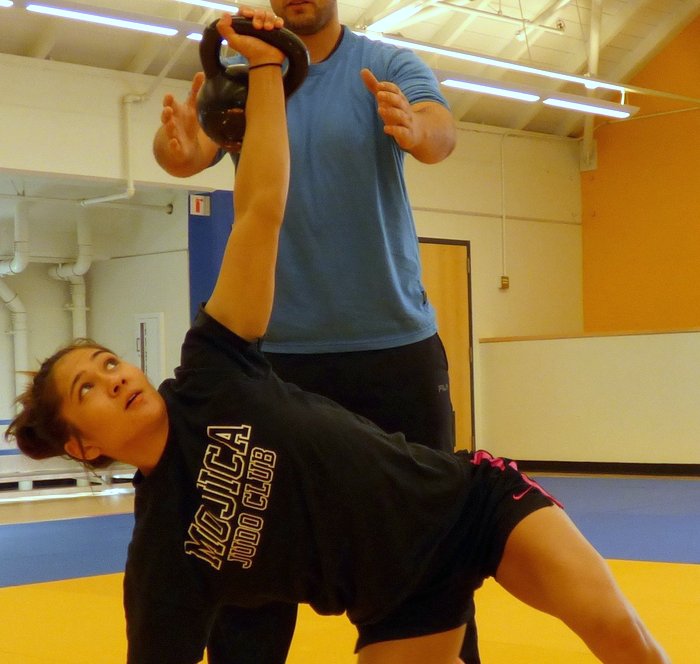
Five Minute Get-Ups
At my HKC certification in April, RKC Team Leader Chris White mentioned doing “Five Minute Get-Ups.” Since then I have added this drill into many of my programs for Judo athletes. At first, they should be practiced without weight, then balance a shoe on the fist for added challenge. I tend to use the “Five Minute Get-Up” protocol at the beginning of our workouts, it serves as a good warm-up, and a great opportunity for skill development.
During the drill, we focus on one quality rep at a time. I encourage the athletes to take their time. You can incorporate “Five Minute Get-Ups” at the beginning of your workout, on a recovery day, or even as a stand-alone skill practice session. Advanced athletes can try it with weight. But, with or without a kettlebell, the main focus is on the fluidity of the movement.
When designing a strength and conditioning program, we need to include multi-planar movements, multi-directional movements, and various stances which are appropriate for our athletes. Exercises like the get-up will help athletes move more efficiently and will decrease their chances of injury while increasing their overall functional strength.

References:
Brown, T. (2013, September). NSCA’s Performance Training Journal, Issue 12. Retrieved November 18, 2016
Kenn, J. (2003). The Coach’s Strength Training Playbook. Monterey, CA: Coaches Choice.
****
Ashoka McCormick, HKC is a performance coach in Santa Cruz, California.
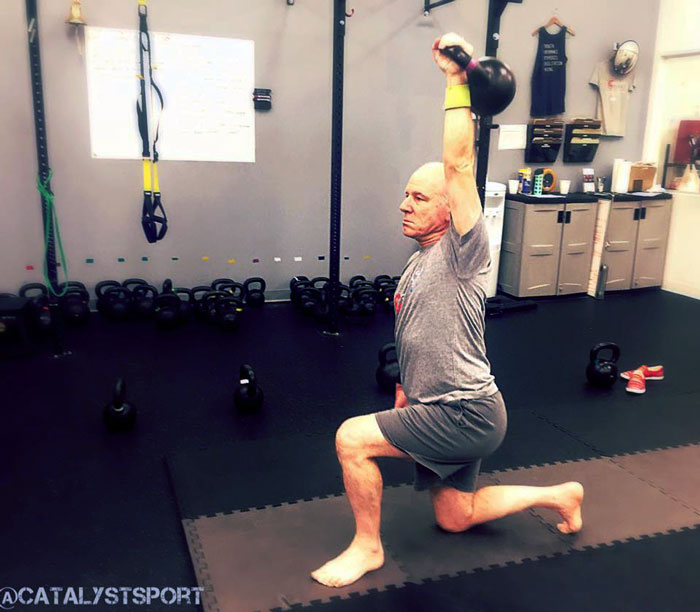
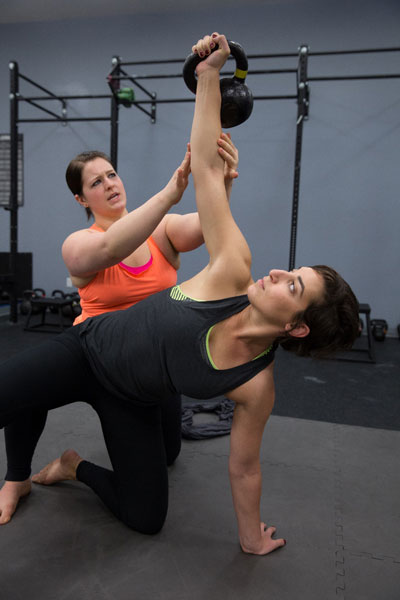
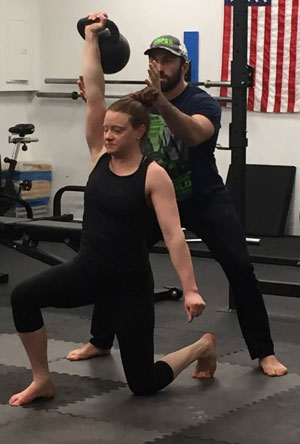
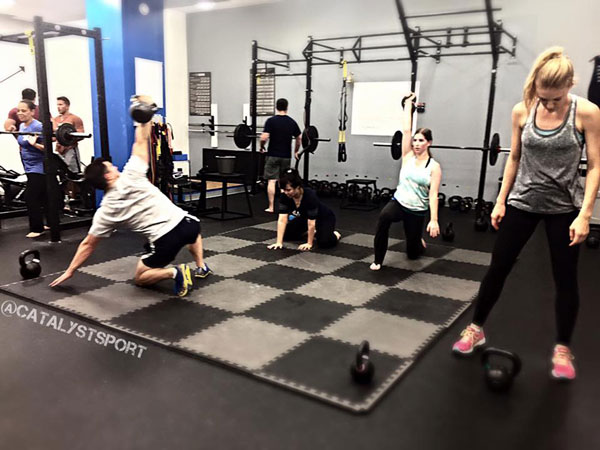
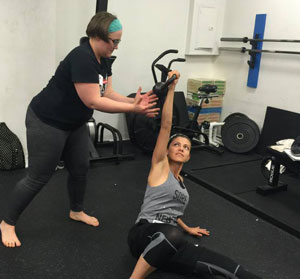
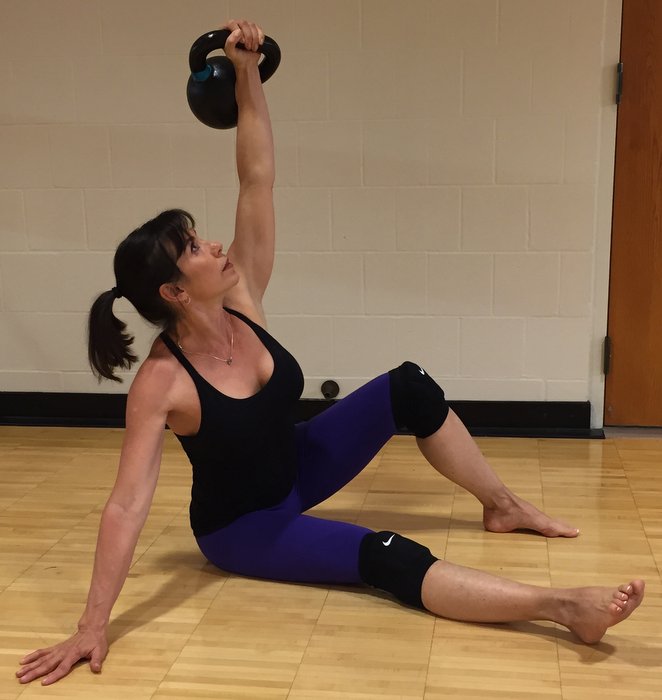
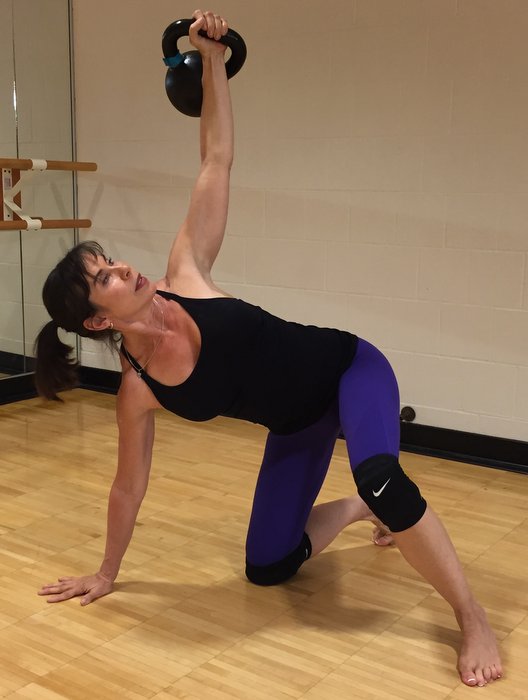

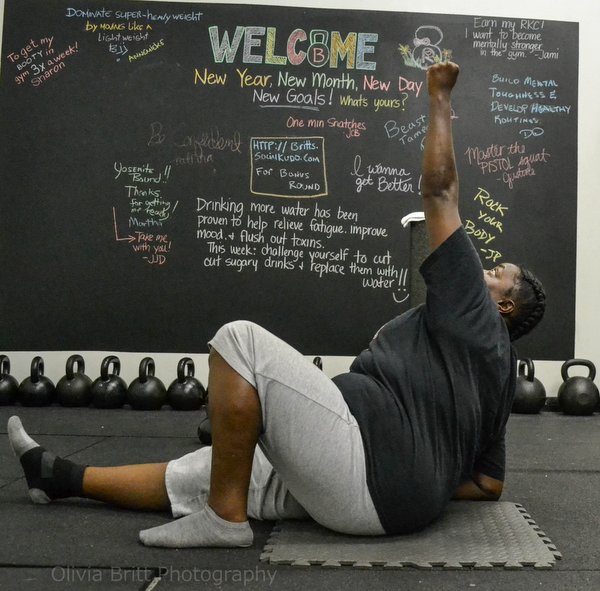
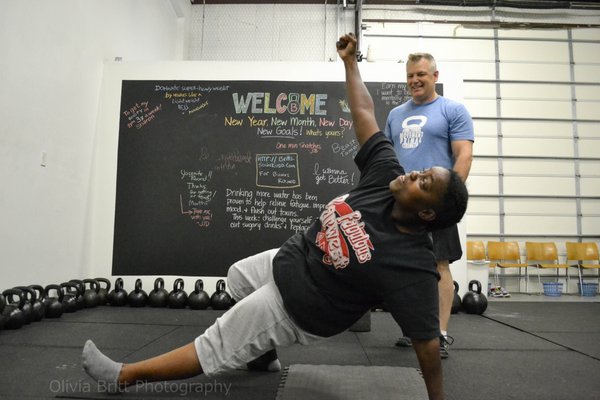
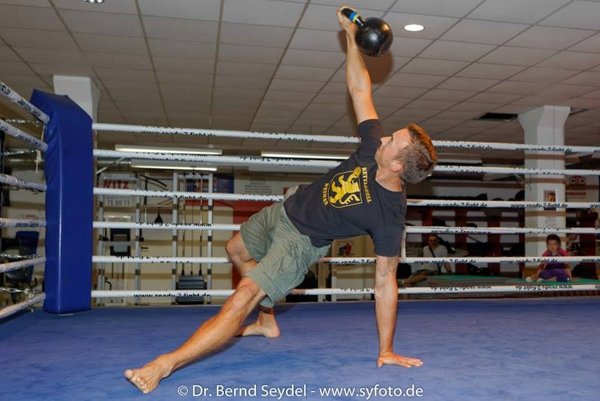
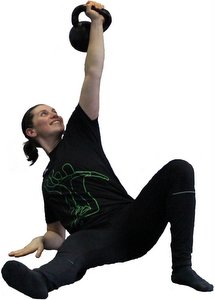 Your body learns to work as a whole unit when performing a Turkish get-up.
Your body learns to work as a whole unit when performing a Turkish get-up.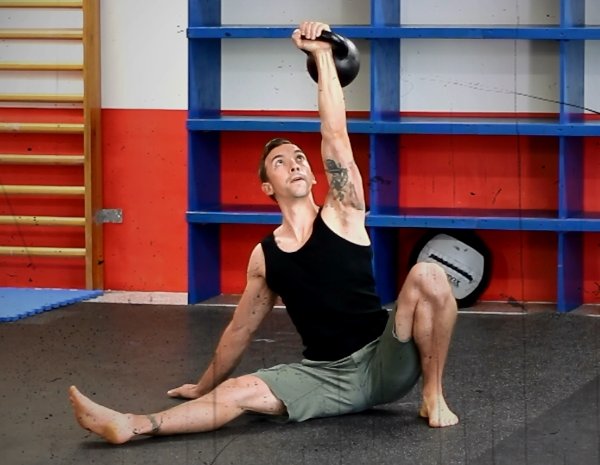
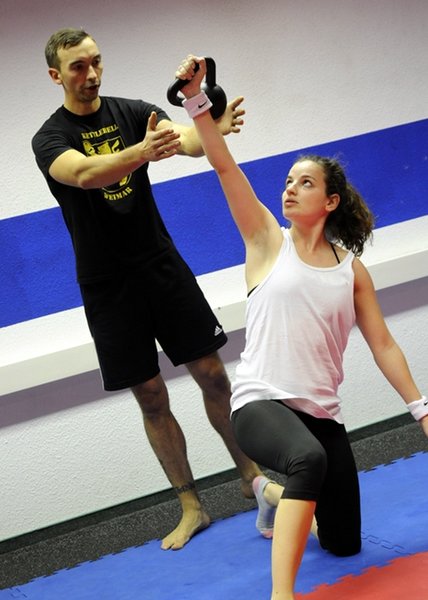
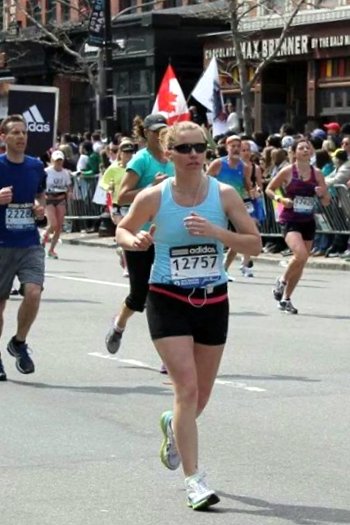
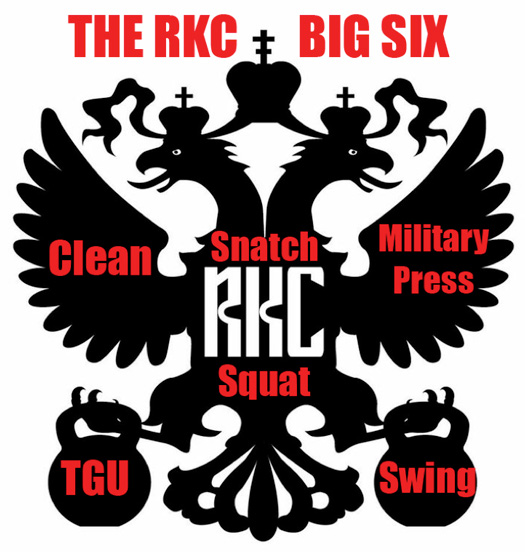
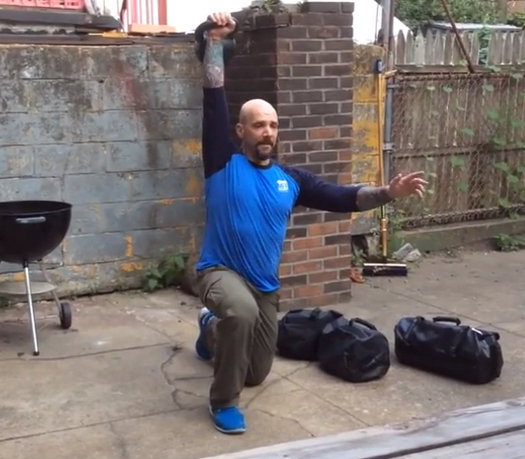
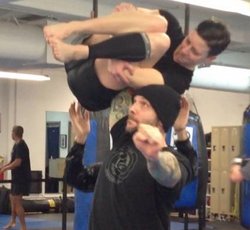 Personally, I find the three hardest parts of a get-up (regardless of weight) to be the initial roll to elbow, the half kneeling to stand and the final roll from elbow to your back. Whether it’s a
Personally, I find the three hardest parts of a get-up (regardless of weight) to be the initial roll to elbow, the half kneeling to stand and the final roll from elbow to your back. Whether it’s a 